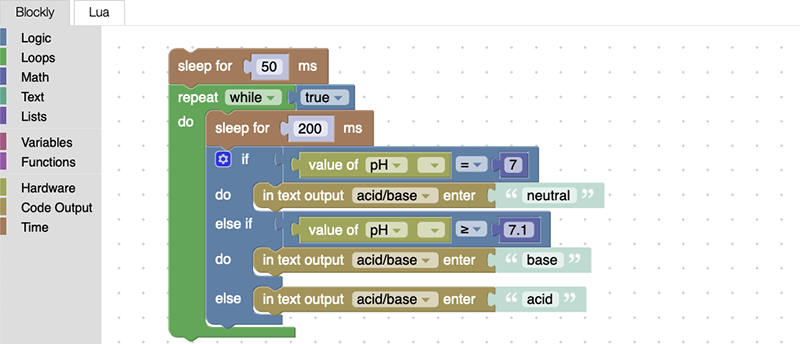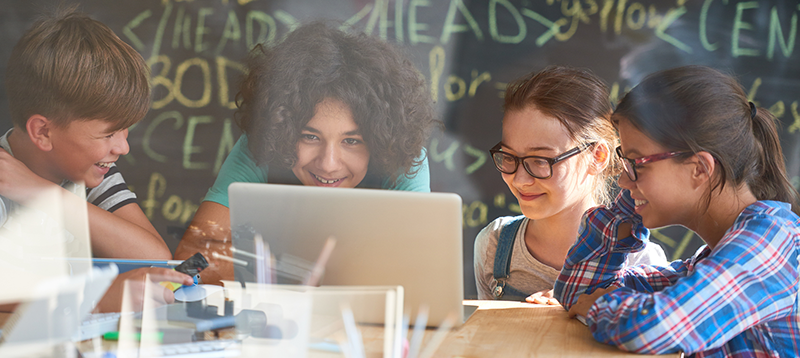Block-Based Coding
Block-based coding offers young coders many benefits that are simply not possible with traditional text programming. For starters, the visual programming environment provided by these platforms are fa
Why Computer Science?
As the world progresses toward an increasingly digital future, it's become essential for today's students to develop an understanding of computer science. In the coming decade, careers in computer science are expected to increase at a faster rate than any other STEM career. On average, computer science professionals also enjoy higher salaries and better job security than professionals in non-STEM fields. By introducing students to computer science skills, such as computer programming, computational thinking, numeracy, and problem-solving, educators can better prepare students for the rapidly evolving future of work.
Introducing students to coding at an early age can have a lasting effect on their aptitude for computer science. Since programming languages are essentially the same as other languages, such as Spanish or English, children generally learn them faster than adults. In fact, students as young as preschool can begin learning simple concepts that serve as stepping stones to foundational programming concepts. Some platforms that use gamification to teach coding skills, such as Kodable offer young coders a progressive pathway that guides them from simple coding games and block based coding to coding with traditional text languages.
What is Block Based Coding?
Beginning around eight years old, or as soon as they are literate, young learners can begin using block coding. Block based coding languages, such as Blockly and Scratch are popular tools for introducing young learners to the basics of computer programming. These visual coding platforms use coding blocks to teach students foundational coding concepts. As they drag blocks to create code, the user interface prevents them from combining coding blocks that create syntax errors. Over time, children learn how to correctly combine blocks of code through trial and error, reasoning, and engaging activities that help them understand each block's purpose.
Benefits of Block Based Coding
Block based coding offers young coders many benefits that are simply not possible with traditional text programming. For starters, the visual programming environment provided by these platforms are far more engaging for new learners. Visual programming is also beneficial because of its use of colored coding blocks. Seeing as many elementary and middle school students are visual learners, they are more easily able to learn key coding concepts when they can drag, snap, and connect visual pieces of code. Since block based programming platforms are usually supported by traditional text programming languages, they can be used to create surprisingly robust applications. This buildable approach enables block based programmers to start with simple applications that require a few blocks and continue learning until they can create more advanced programs. Block based coding is a highly effective tool for teaching new coders about key coding concepts, including variables, loops, if/then/else, commands, and more. After they have mastered block based coding and understand the foundations of programming languages, students are ready to progress to traditional text programming languages, such as python, JavaScript, and HTML. Below are brief descriptions for two of the most popular block based programming languages: Blockly and Scratch.
Blockly

Blockly uses coding blocks that are shaped like puzzle pieces to teach students the foundations of programming. As students drag blocks to form connections, Blockly prevents them from combining puzzle pieces that create syntax flaws. Blockly is built upon traditional text programming languages, usually python, JavaScript, or Lua, which enables students to compare their block code with the commands they script in text. Because it was developed by Google and is open source, Blockly has been integrated into several different products outside its original site and can be used for a wider variety of applications than Scratch. Kids as young as six can begin learning to code using Blockly's drag-and-drop method on the Blockly Games website.
PASCO's Blockly integration runs on Lua and is included within SPARKvue and Capstone software to support coding in STEM courses. Through our software integrations, Blockly can be used to script commands for any PASCO sensor or interface. When applied to a sensor input and a device output, such as those housed within the //code.Node, students can create data-driven feedback loops that collect, display, and respond to incoming sensor measurements. This new approach adds coding concepts to the inquiry process to help students understand how coding and technology can be used to solve real-world problems.
Scratch

Scratch is a free online coding platform that uses colored coding blocks to teach the basics of programming. Unlike Blockly, which is backed by a text programming language, Scratch is its own programming language. Developed by the Scratch Foundation, in collaboration with the Lifelong Kindergarten group at the MIT Media Lab, Scratch enables coders to snap together coding blocks that represent different coding components. Through gamification and coding blocks, Scratch helps students practice problem solving, critical thinking, and communication. It also has a lively online community, where students can remix and share their creations, including animations, stories, and games. Scratch is best for learners that are at least eight years old; however, ScratchJr offers a simplified version for new coders between 5-8 years old. It is an excellent resource for introducing young coders to the foundational concepts of coding.



